Posts Tagged ‘Amazon’
Amazon Patents The Photographic Studio
May 12th, 2014by Gwyn Headley
Managing Director
Let’s get this straight — I love America. It’s a great place; brash, confident, a can-do country. If a British business fails, the humiliation and disgrace is a permanent stain. If an American business fails, they pick themselves up, dust themselves down, and start all over again. And some of my best friends are Americans, as you’d expect me to say.
In fact it was my American friend Martha Moran who alerted me to this extraordinary story, an unprecedented combination (to my mind) of ignorance, hubris, licit connivance and venality.
Photographer Udi Tirosh posted this blog. It describes how the US Patent & Trademark Office has awarded a patent to Amazon for photographing things against a white background. That’s right — a patent on what we call cut-outs. The imagery that made Dorling Kindersley books famous around the world.
How can they get away with this? What effect will it have? The darker side of American business confidence also lies in this “let’s try it on” attitude. And all too often the American establishment colludes.
There’s much not to like about America. Deranged gun laws. The Albuquerque Police Department, who have shot dead 55 people since 2010. The US legal system. The $67 million claimed by a judge for a lost pair of trousers. Companies who attempt to copyright phrases in the English language. Bridgeman Art Library‘s case against Corel for nicking their images — Bridgeman was British, Corel won. The publishers of He’s So Fine sued George Harrison‘s Harrisongs for plagiarism with My Sweet Lord, which had one chord change in common. Harrison lost. The catastrophic Gulf oil spill caused by an American subsidiary of the British firm BP — BP was given a swingeing, humungous fine and ordered to pay billions of dollars of compensation, sometimes to people living a couple of hundred miles inland.
Every man, woman and child in the United Kingdom spends £70 a year with Amazon. It provides an amazing selection and a terrific service. Of course we buy from Amazon SARL in Luxembourg, not from Amazon.co.uk, which merely takes our order in the UK, locates the product in the UK and posts it out to us in the UK from within the UK.
In the past three years Amazon has generated sales of more than £7.6 billion in the UK, without paying any corporation tax on the profits from those sales. They paid just £4.2 million in tax in 2013, 0.1% of their UK revenues.
And you know why? Because their tax advisors are smarter than our taxmen and our government. Amazon is doing nothing wrong. We are missing out because of the incompetence of our legislators and HMRC.
And can Dorling Kindersley now expect Amazon to come knocking?
Contentious VAT On Ebooks
October 28th, 2012by Gwyn Headley
Managing Director
Tags: 3G, accountants, Amazon, American, Apple, bandwidth, Berwin Leighton Paisner, BLP, British publishing industry, broadband, City, clients, digital publishing, drive prices down, ebooks, Europe, fiscal neutrality, Foyles, gilt-edged, Government, greater good, Heritage Ebooks, HMRC, illustrated ebooks, KFC, law, lawyers, losing, Luxembourg, Macdonalds, photographers, picture libraries, Printed books, pro bono, Publishers, raise prices, standard-rated, Starbucks, tax, Tesco, UK, VAT, Waterstones, zero-rated
Printed books are zero-rated for VAT in the UK. Ebooks are taxed at 20%.
Publishers have taken a softly-softly approach to VAT on ebooks, fearful that if they kick up too much of a fuss the Government will awaken to the fact that printed books are presently zero-rated and slap 20% on them overnight.
Such a move would decimate the British publishing industry — and by extension picture libraries, photographers and all the industry’s ancillary suppliers would take a huge hit. It’s therefore unlikely to happen, but who can predict what a politician may take into his head to do.
City law firm Berwin Leighton Paisner has announced on its website:
“VAT treatment of ebooks – The firm is taking a groundbreaking case challenging HMRC’s view that ebooks are standard-rated for VAT purposes, in contrast with physical books which are zero-rated.”
Hard-nosed commercial firms like BLP do not take cases on pro bono, or challenge national or international law simply for the greater good. Therefore they’re doing this for one of their clients, and that client will have deep, deep pockets.
Who can it be? Who will benefit?
Well, the consumer will benefit if prices fall by 20% (they won’t). Publishers will benefit from a boost in sales.
But by far the biggest beneficiaries will be the retailers. Apple sells ebooks. Tesco sells ebooks. They will both see a hike in profits. BLP numbers Apple and Tesco among its gilt-edged list of clients.
Our digital publishing company Heritage Ebooks sells 50 illustrated ebooks from its site for every one ebook sold by the rest of the UK’s ebook sales outlets — Waterstones, Foyles, Tescos and so on — put together.
And for every one of our ebooks that we sell from our site, Amazon will sell twelve from theirs.
It is disproportionately huge. OK, so we’re tiddlers, microbes even, but I expect the proportions are similar whatever you publish.
Amazon has been subject to much opprobrium and contumely for selling ebooks to UK customers and charging the full 20% VAT while taking advantage of the 3% VAT they pay as a company based in Luxembourg. Like Starbucks, Macdonalds and KFC, large American companies have an aversion to paying their fair share of tax in Europe, and as their lawyers and accountants are sharper than ours, they can get away with it.
And now some organisation, through BLP, is challenging HMRC’s ruling on the grounds that charging different rates of VAT on print books and ebooks breaches EU law on fiscal neutrality.
Come on, this has to be Amazon. Who else could afford such a suit? And who else would profit more?
Amazon charge us, the publisher, for the bandwidth used when a customer buys and downloads a Heritage Ebook from them. Because our ebooks are highly illustrated, they have large filesizes and therefore incur high bandwidth usage fees. And because one or two books are downloaded via 3G rather than broadband, Amazon charges us across the board at mobile phone companies’ bandwidth fees.
The result is that for two of our titles, we are losing 10p on every sale made through Amazon because of their charges. Amazon are thereby forcing us to raise our prices.
And I thought their intention was to drive prices down.
The Feminisation Of Marketing
April 20th, 2012by Gwyn Headley
Managing Director
… or Feminization if you’re American.
At the Digital Minds Conference last Sunday, part of the London Book Fair (from which I’ve only just surfaced, so please excuse the tardiness of this thought) there were three keynote speakers. I’d always thought there could only be one keynote speaker, who would be The Keynote Speaker, but the conference world appears to have left me behind. Or common sense has left them behind.
One of the excellent keynote speakers (there were two) was Jim Griffin of OneHouse LLC. I didn’t know him or what he does, but I listened obediently. And what he had to say was good. I sat up when he announced “Every time someone has to click on your website, you lose half your audience.”
Of course you do! I do it myself! Like most youth, I suffer from diminishing attention span syndrome, and if I find a website is making too many demands on me, I will wander off elsewhere. Memo to self: must ensure that the new iteration of fotoLibra has as few jumps as possible. There’s a great art in this, and for someone as prolix, verbose and effulgent as I am, it is extremely hard to pare what I want to say back to the core. E.g. that 32 word sentence could have been written in seven.
Griffin went on to advocate the feminisation of marketing. In a few swift sentences he describes the shift from the Alpha Male marketing of the late C20 to today’s softer, more insidious techniques. And he’s absolutely right. Ten years ago companies would unblushingly describe their salesmen as ‘thrusting’, ‘aggressive’, ‘potent’ and displaying a ‘robust’ attitude. They might have well as stated their policy as “Wham! Bang! Thank you Ma’am!” Make the sale, move on. Scored! Or as I saw in one memorable, boastful but educated piece of grafitti: VIDI • VICI • VENI ( you can look it up for yourselves if you need to).
When I interviewed Jeff Bezos for The Times back in 1996 he told me that he’d chosen the name Amazon for his company because he wanted it to be the biggest damn retailer in the world and the Amazon was the biggest damn river. It seemed like braggadocio at the time, but they’re on their way. And they’ve done it through the feminisation of their marketing, not through the big swinging dick statements of their founder.
Jim Griffin pointed out that Amazon knows what you like to read. It knows your birthday. It knows the sort of music you listen to, the films you watch. It probably remembers the colour of your eyes and your wedding anniversary. It’s a woman, for God’s sake. And the customers keep coming back. Amazon isn’t interested in a one night stand, it wants a long term, loving relationship. As long as you keep giving it money.
What if you go off and start buying from someone else? I wouldn’t be surprised to learn that in the future there’ll be some built-in module to penalise disloyalty.
They could call it Alimony.
Kindle for the iPhone
January 13th, 2010Amazon announced a Kindle app for the iPhone a while ago; I’ve just got round to downloading it.
Now I’m a fan of ebooks. It’s a great concept, and therein lies the future — but I still have reservations. I don’t think there will be a tipping point from print to ebooks any time soon.
It won’t happen as quickly as many gurus hope it will, because
1. New ebook readers are announced daily. One format must achieve dominance, by which I mean 80%+ of the market.
2. That format has to do everything: colour, sound, movies, the lot
3. They are furiously expensive
4. We’re not there yet
Amazon famously announced that on Christmas Day more ebooks were downloaded than than they sold printed books. The future had arrived.
Well, durrr. Who is going to be on line buying books on Christmas Day? And who is more likely to be sitting in their solitary flat with the turkey pizza shoved under the door, endlessly scanning the internet for stuff to download?
Weren’t 8 out of 10 of their top selling ebooks all giveaways? How many of the print titles were free? I think we’ve been handed some spurious statistics here, and it’s been repeated all over the place.
The chatterati WANT ebooks to succeed. And of course they will. But a lot of people have got to get their acts together pretty damn quickly if it’s going to happen any time soon.
What prompted this? Well, I downloaded the Kindle app, and then I downloaded an ebook from Amazon.
And this is what I saw:
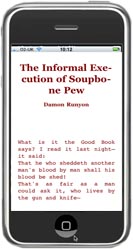
Well, I’m sorry — I gave up right away. There are graphic standards to keep to in this world, and I refuse to dumb down to
THE INFORMAL EXE-
CUTION OF SOUPBO-
NE PEW
which is beyond pathetic as any sort of commercial offering.
Keep trying, chaps. I’m sure you’ll make it eventually.
The ebooks that Neil Smith and I have produced for Aaron’s Apps are attractive, readable, innovative, colourful, non-linear, a new way of presenting a guide book, a new way of presenting history, and (though of course I’m saying all this myself) a genuinely new way of reading a book. These are guide books that follow YOU about, not the other way around. One huge illustration, eight feet by six feet, 160 pages which you can read in any order, and a nifty way to locate yourself in a city 200 years ago, as easily as today. Impossible to replicate in a printed book.
Now THAT’s what I call an ebook. The world should be beating a path to our door.

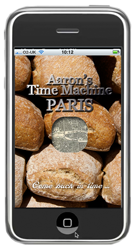
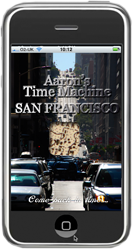

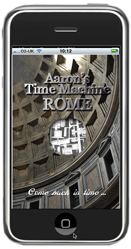
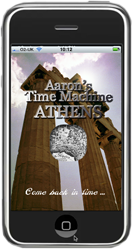

fotoLibra 2009 Pro Blog Index
January 7th, 2010by Gwyn Headley
Managing Director
Tags: Aaron's Apps, Aaron's Time Machine, Adobe, Amazon, Apple, BAPLA, book publishing, books, CS3, CS4, drag and drop, easy upload, ebook, ebooks, Encyclopedia of Fonts, fotoLibra, Google, heritage, iphone, iphone apps, Macintosh, marketing photographs, Microsoft, Model releases, photography, Photoshop, picture library, picture sales, Prices, property releases, rights, selling photographs, selling pictures, stock agency, territories, upload checker, user experience
Here’s an index to the fotoLibra Pro Blog for the whole of 2009.
As I complained 6 months ago, it takes a surprising amount of time to compile, so if there are any WordPress experts out there who know how to automate this process, we’d love to hear from you.
If you’re new to fotoLibra, welcome, and may we suggest you read through the HINTS & TIPS section, and if nothing else read Great Expectations. If you enjoy a bit of controversy, read BAPLA Shock Horror.
Comments are welcome, even on old posts, and will be read and often responded to.
HINTS & TIPS
- Three hundred pixels per inch
- Shots of Redemption
- How To Take Aerial Photographs When You Haven’t Got An Aeroplane
- Compression
- Great Expectations
- RSVP
ABOUT FOTOLIBRA
- New fotoLibra
- BOMBSHELL
- Most Popular Searches
- White Labelling
- A Third of a Million
- Picture Calls
- fotoLibra DND & Checker 2.1 Released
- Drag ‘n’ Drop Upload Checker
- The New Picture Call Tab
- SPQR
- Search Engines and fotoLibra
- Yahoo Blocks Our Emails
- It’s got to be today
- 300,000 up!
ADOBE
BAPLA
CUSTOMERS
E-BOOKS & PUBLISHING
- Free iPhone App: Aaron’s Time Machine: London Lyte!
- Orphan Books
- The Killer eBook Is Nearly Here
- UK Politicians Not Entranced by eBooks
- Primary School Books
- Getting ready for e-books and Graphics
- Kindle 2
- More Kindling
- The Killer Book for e-books
IT
LAW
MISCELLANY
- Winterval
- Reunited
- Prophecies & Prophets
- Unpleasant Comments & Spam
- Proto-foto-Libra
- Cancelled Air Show
- Giving It Away For Free
- A heritage in photography
- Farewell Kodachrome
- The perils of publishing
- Happy New Year
NETWORKING
NEWS
PICTURE CALLS
SECURITY
TRADE FAIRS
BOMBSHELL
July 24th, 2009by Gwyn Headley
Managing Director
I recommend anyone joining fotoLibra to read the Great Expectations blog posting to find out more about the exciting community they are joining.
Ben Shipley posted a comment which I said I’d answer in a new posting. Now David Carton has reminded me that I haven’t answered it, so here goes. First, Ben’s original comment:
It would be nice if the list view showed lightbox adds as well as views (at present the only way to get this info is to try to delete the photo).
Also, after working with other libraries, I am not sure what “views” means – did the photo show up among 1,000 others, or did someone actually bring up the full-size preview? And is that “someone” a valid customer or does it also include fellow members?
The best thing about fotolibra for my money is the way you all try to keep members informed – you seem like a very cool bunch of souls in general – but one can never get too much clarity, especially when it comes to what is selling out there.
Along same lines, I am curious where you see yourselves in the photo universe – what niches you aim for, where you saw this going when you started, where you see it headed today, where you fit into the whole amateur/professional photography experience, not just commercial stock. We get hints from Jacqui, but clarity definitely breeds patience.
Right. The first request is a simple feature enhancement. We already gather this information; the problem is figuring out to feed it to you in a neat, uncluttered, intelligible way. The data feed you currently get has nine columns; adding a tenth is going to make it uglier. We will work this out. It may involve having to drop down through layers of data.
‘Views’ (I answered this) means Thumbnails that have been clicked on to create Previews. The people who click could be either buyers or sellers; if they’re not logged in we don’t know who they are.
We always enjoy compliments. Thank you for that one.
OK, here’s the big one. In our photo universe, we’re not Getty Images, Corbis or Alamy. We’re much smaller, much more flexible, faster and much more personal. Buyers deal directly with the owners of the company, not a nominated ‘account handler’. Some people love this, others actually prefer anonymity and disengagement. When did you last speak to someone from Amazon, Adobe, Google, Microsoft or Apple? But you probably give them your money.
In Britain there are over 600 picture libraries. 440 of us are serious enough about the business to pay an annual subscription of about £500 to BAPLA. In terms of visitors to our web site, we come eighth. So we’re in the top 2%, and we only started 5 years ago. But we still need to do better.
Our major market is book publishing. It’s a market we know and feel comfortable with. We don’t reach ad agencies and design groups as we should. We sell to calendar and greetings card publishers. We don’t do much in the way of celebrities, news or sport.
We started with the intention of providing access to family albums, shoe boxes, the fading photographs in Granny’s attic. But we were swamped by the digital revolution.
HERE’S THE BOMBSHELL. We still want those pictures, so now we’ve decided to do something about it.
Alongside the existing Member, Pro Member and Platinum Member accounts, we are creating a completely new membership category.
It’s going to be called HERITAGE MEMBER. It is completely FREE, and it gives you UNLIMITED storage.
WOW!! I hear you shout. What’s the catch?
The photographs must have been taken before January 1st 1980. They must adhere to our Submission Guidelines.
And that’s it.
Membership will run in tandem with your existing fotoLibra membership. Full details will come with the formal announcement. We hope to have this in place by the beginning of September.
Getting Ready for e-Books and Graphics
May 15th, 2009by Gwyn Headley
Managing Director
Amazon’s Kindle is now allowing blogs to be posted. Here’s one user’s experience, which can be read in full at http://www.daniweb.com/blogs/entry4341.html:
When I looked at the preview of what my blog looked like in the Kindle after adding my first blog to the system, I was shocked at the terrible quality.
First of all, it was black and white. My blog has pictures and on the Kindle they were not just black and white, they were low resolution black and white. It changed my carefully chosen font to a Times New Roman. In short it looked horrible. Sure, you can get away with a black and white eBook Reader for books, but if you are going to add other content, you need it to be full color or it just looks ghastly (or you are asking bloggers to come up with a special Kindle design, which is an unreasonable expectation).
It was at that moment, staring at that horribly ugly preview of my blog that it hit me. This is clearly a job for Apple.
Rumours of Apple working on an e-book reader have intensified over the past few months. Would it be like a big slender iPhone? Will it actually come? Or is this just wishware?
To many people, me included, the look and feel of a thing is as almost as important as the content. If I see my work in Times New Roman (a wonderful typeface, drowned by ubiquity) I feel physically sick. Fonts are the clothes words wear, as I quoted in my Encyclopaedia of Fonts.
And from fotoLibra’s point of view, the sooner we have colour e-books the sooner we can sell images to e-book publishers.
It will happen. So we are preparing for it.
The Killer Book for Ebooks
March 9th, 2009by Gwyn Headley
Managing Director
Tags: Amazon, Bezos, ebook, fotoLibra, killer app, Kindle 2, prediction, VisConPro, Visual Content Provision
It’s not on the market yet, but we can do it now. All we need is the content.
As ebooks stand at the moment, they offer less than conventional books do. You can’t get anything from an ebook you can’t get from a paperback at a fiftieth of the price (once you include the hardware). The big advantage is search/indexing, not particularly relevant to fiction, the major ebook market. As yet, there is no killer app.
But when ebooks get color, there’s no reason why the images that now grace illustrated books shouldn’t just be still pictures. There will be mini-movie and sound clips embedded in the text.
Imagine a travel book with the sounds and bustle of a Hong Kong market; a bird book which shows the distinctive jizz (behaviour pattern) of each bird as well as letting you hear its song; a D-I-Y book where you could actually see how to apply putty; a cookery book with techniques clearly demonstrated — the method of carving a shoulder of lamb, for example — or a history book with a WWI tank lumbering over the trenches.
That would make the purchase of the ebook as reading tool worthwhile.
fotoLibra’s holding company is called VisConPro Ltd. It stands for VISual CONtent PROvision. At the moment ebooks are almost solely sourced from unillustrated texts, because today’s ebooks can only handle 16 shades of grey. I had a computer like that in 1983. So the publishers are currently providing content simply as text — TEXtual CONtent PROvision.
We have the images. We can shortly have the movie clips, on the same basis that grew fotoLibra from a dream to 300,000 images online. We can collaborate with a publisher to produce a few sample titles and a snappy generic name. Alas, Prentice Hall already has Active Book.
It’s perfectly possible to create any of this content right now. All we need is for Kindle to add colour and Quick Time compatibility.
THEN as a consumer I will be thrusting my dollars into Mr. Bezos’s ever-open palm.
And as a Visual Content Provider I expect Amazon will be doing the same to me in return.
More Kindling
March 6th, 2009I’ve been accused of doing a Mary Whitehouse, condemning something without even seeing it.
But I don’t have to see Kindle 2 to know the most important thing about it from fotoLibra’s point of view.
It. Doesn’t. Do. Colour.
And I’m not condemning it. Far from it. I’d love to have one, and I will — once it has millions of colours and works in Wales. But it won’t be replacing my library and it won’t be my primary reading tool. Travel and holidays, great. Sitting at home, uh uh.
Passing into the realms of speculation here, I think Apple and the Chinese, and Japanese, and the Koreans will be watching Kindle sales very closely. At $359 I don’t expect Amazon is making big profits out of the hardware — it’s the ‘get a free car if you only buy our gas’ strategy.
Amazon are attempting to cementing their dominating position, controlling the means of delivery; just where Microsoft were 15 years ago. But it won’t last. It never does.
Ebooks now are at the same stage of customer acceptance as mobile phones were a decade ago. The difference is that ten years ago Europe was way ahead in mobile phone acceptance, with the US lagging far behind, while today America leads the world in ebook usage, with barely a ripple shaking the Euro market. Will a Euro-Kindle change that? Maybe. But the US will stay far ahead for the foreseeable future. One thing’s for sure — nobody in benighted Britain is going to be manufacturing ebooks any time soon.
Meanwhile fotoLibra has to figure out image licensing costs for the time when ebooks acquire colour and do become significant items in publishers’ balance sheets.
Kindle 2
March 4th, 2009Kindle is Amazon’s ebook reader, and they’ve just launched a new version.
I’d love to be given one as a toy, but I’m going to be a late adopter on this one — I like to hug trees after they’ve been converted into books.
And as I’ve already got over 4,500 books, and I’m not a big novel reader, and I don’t do a huge amount of travelling, and $359 would buy me an awful lot of reading matter which would still be extant when the Kindle is forgotten landfill, and it only works in one country in the world (admittedly the third largest), and it’s only available in black and white, and every book would feel the same and smell the same and look the same and weigh the same and you could lose your entire library on the tube, if it’s all the same to you I’ll pass for the moment.
The ads say “Shop the Kindle store wirelessly, anytime, anywhere!” Not true. Like Kindle 1, Kindle 2 doesn’t work in Europe or in the rest of the world outside North America.
“Images are sharper than ever, in 16 shades of gray!”
Perhaps. Most books are printed in colour, and fotoLibra sells 98% colour to 2% grayscale imagery. It’s not vitally important for a novel, but in every other branch of publishing, colour is imperative.
At the moment there’s a careful stand off between publishers and picture libraries over the issue of digital rights. Prices for images (which are tumbling) are based on page sizes, print runs and territorial rights. Ebook readers don’t yet impinge on our consciousness, because nobody buys an ebook to look at the pictures.
But colour will eventually arrive. Who knows, Kindle 4 may run to 256 colours. T&H, Phaidon & Abrams won’t be holding their breath.
And we will start addressing the situation when publishers start making money from illustrated ebook sales.
Meanwhile we’re keeping an eye on it.
Kindle doesn’t yet light my fire.

